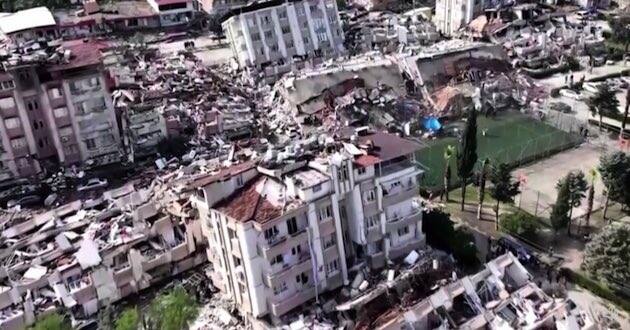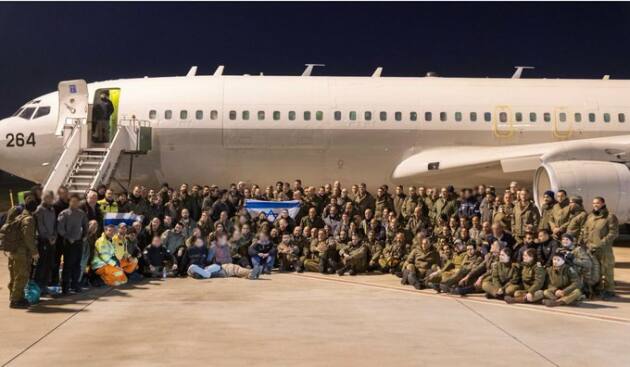The nation of Israel again is giving the world an example of how to love its enemies. On Monday, it sent a 150-person military aid mission to Turkey in the wake of the massive 7.8 earthquake and its 7.5 aftershock that shook the country to its foundations and killed around d 3,000 people.
More than 280 aftershocks have been recorded which is making rescue efforts difficult.
“Of these, a third are headquarters and intelligence, and two-thirds have rescue, medical and engineering capabilities,” said Col. Golan Vach, commander of the IDF National Rescue Unit.
Prime Minister Benjamin Netanyahu helped mobilize the response.

High rise apartment buildings collapsed during the earthquake. Wide scale destruction is apparent. Video.
“At the request of the Turkish government, I have instructed all authorities to make immediate preparations to provide medical and search and rescue assistance,” he said. “The foreign and defense ministers have already been in contact with their counterparts, and we will in the coming hours agree on the dispatching of a delegation as soon as possible.”
He went on to explain why countries often turn to Israel in times of emergency
“This is what we do around the world, and this is what we do in areas close to us,” he said.. “Since a request was also received to do this, for the many who were injured in the earthquake in Syria, I have instructed that this be done as well.”
Israeli Foreign Minister Eli Cohen said Turkish Foreign Minister Mevlut Cavusoglu informed him that Turkey would “welcome the Israeli aid.” The operation, named “Olive Branches,” saw two Israeli search-and-rescue teams sent to Turkey early Monday. A second flight was planned containing the full IDF rescue and medical teams. Defense Minister Yoav Gallant approved the IDF building a field hospital in Turkey.
Israel sent 80 tons of supplies food, tents, generators, baby formula, diapers and bedding to the United States following Hurricane Katrina in 2005, as well as first response aid to the victims of the massive 2004 tsunami that struck Indonesia and Sri Lanka. In 2005. It was also noted as being the first nation to respond with help on the ground after the Haiti earthquake in 2010.
–Dwight Widaman | MV









